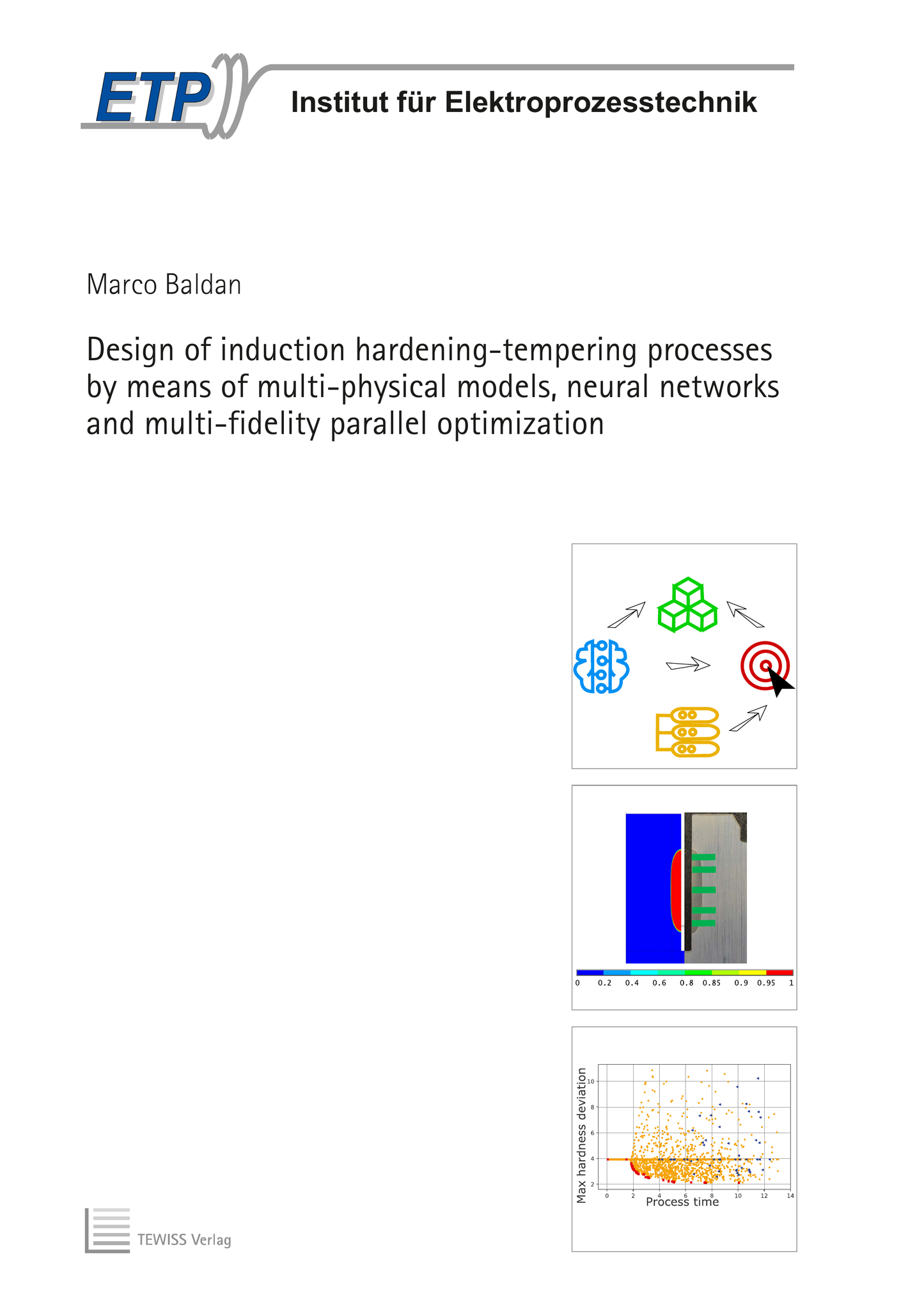Design of Induction Hardening-Tempering Processes by means of multi-physical models, neural networks and multi-fidelity parallel optimization
Autor: Marco Baldan
ISBN: 978-3-95900-614-9
Dissertation, Leibniz Universität Hannover, 2021
Herausgeber der Reihe:
Band-Nr.: ETP 01/2021
Umfang: 170 Seiten, 102 Abbildungen
Schlagworte: Induction hardening and tempering, numerical modelling, multi-objective optimization, machine learning
Kurzfassung: This dissertation investigates and describes, in a broad sense, numerical methods to be adopted in the design of induction hardening-tempering processes. They include multi-physical models of the direct problems, optimization algorithms to solve inverse problems, use of surrogates and parallel computing as acceleration techniques. Multi-physical models consist of electromagnetic, thermal, metallurgical and, in case of hardening, mechanical analyses too. Due to the lack of available microstructure-dependent electromagnetic properties, their identification became a necessary step to get a complete multi-physical model. It follows the introduction of evolutionary optimization algorithms to solve inverse problems involving expensive (i.e. multi physical) field evaluations, in particular, properties identification and optimal control tasks. In this, including, on the one hand, single- and multi-fidelity metamodels (e.g. Gaussian Processes and neural networks), on the other, parallel computing, turns out to be a successful strategy.


